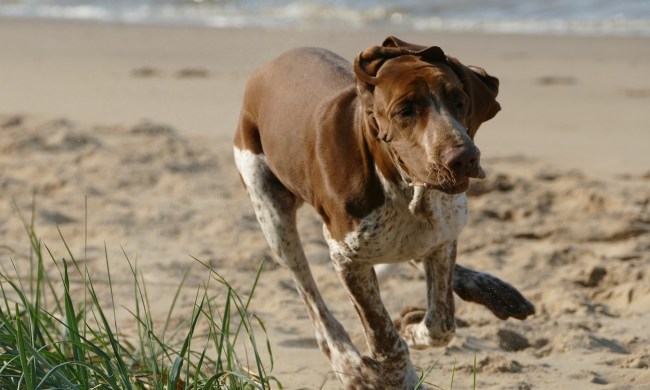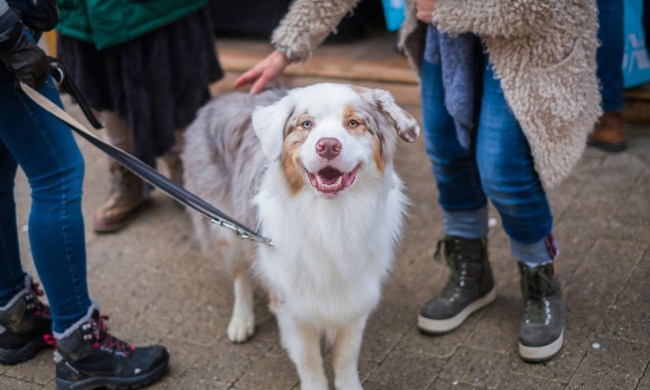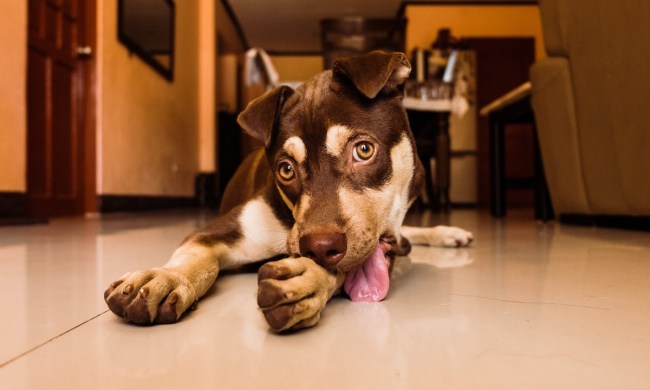It’s something of a running joke among humans across cultures and time: Dogs love to carry sticks in their mouths, even ones that are way too large. It seems that despite offering infinite treats and toys, they prefer the more natural playthings. You may have seen your buddy pick up a branch or two and proudly prance around with their prize. But why do dogs like sticks? Interestingly, there are a few motivations behind this inclination. Here’s what you need to know about your pup’s love of twigs.
Why do dogs like sticks?

Whether at the dog park, out for a walk, or in the backyard, your pooch will find sticks everywhere, as if they are drawn in like magic. And they might be! Truthfully, it really all comes down to their instincts that trace back to their wolfish ancestors. Here are a few reasons that dogs like sticks.
Gathering
While we think of some dogs as elite hunters, they also have a strong drive to gather food, bedding, and other necessities. Your pet could fulfill this need by bringing home sticks or playing with them so they feel that they have checked this activity off of their list.
Chewing
We know that chewing on Greenies is good for our dog’s teeth, but what do they do when you’re not around to provide dental treats? In the past, dogs had to rely on natural remedies to keep the pearly whites intact. Now you will especially find your puppies going for the sticks when teething. Adults also chew to strengthen their jaw muscles.
Smelling
Dogs explore the world with their noses first and foremost. They enjoy interesting scents — you may notice your dog sniffing leaves, grass, and trees on walks. Sometimes, your animal might decide to bring a bit of the outdoors in and carry a stick into the house for the musky perfume it offers.
Hunting
Some have suggested that dogs carry sticks because their predecessors frequently dragged around bones. There’s some debate about this, but researchers point out that our beasties are actually omnivorous and have eaten plants for thousands of years as part of a varied diet.
Is it safe for dogs to chew on sticks?
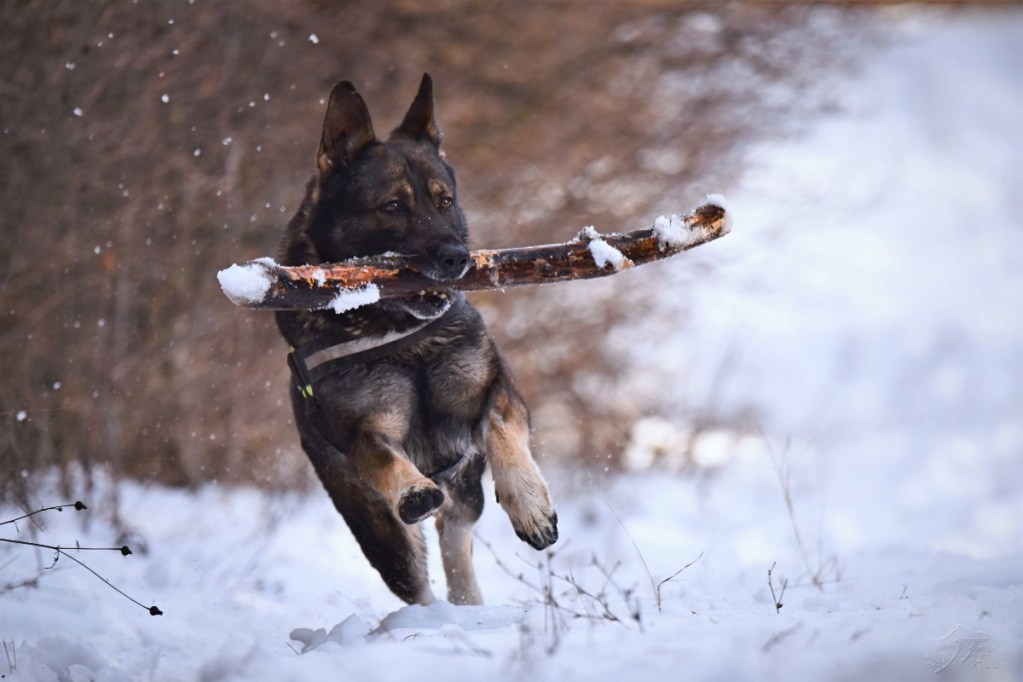
Well, here’s the not-so-great news — for your dog, at least. Despite their undying love and commitment to sticks, this really isn’t a safe toy or chew. If your pup is just carrying it in their mouth and not ingesting or gnawing at it, you can probably leave them be. But you should remove sticks and replace them with something better if your pet starts to break pieces off. One of the biggest concerns here is splinters, which could nick their mouth or even their stomach.
What are the hazards of chewing on a stick?

Splinters definitely pose one of the most obvious issues, but it doesn’t end there. There are a few reasons we don’t recommend sticks as a good chew toy for dogs.
Choking
Your furry friend doesn’t always have a great idea of what will fit in their mouth and throat. They might accidentally swallow a stick or a piece of one and choke on it.
Digestive issues
In keeping with their name, bits of stick can get, well, stuck, in a pooch’s stomach or intestines and cause problems, even days later, once bacteria has had a chance to build up.
Intestinal blockage
If you’ve had a dog long enough, eventually you hear about the dreaded blockage. Just about anything can get lodged in their tummy and it frequently requires surgery to fix.
Dental problems
While dogs think that sticks work as great toothbrushes, more likely, your pup pup will lose or break a chomper when munching on them.
How to safely allow dogs to play with sticks?
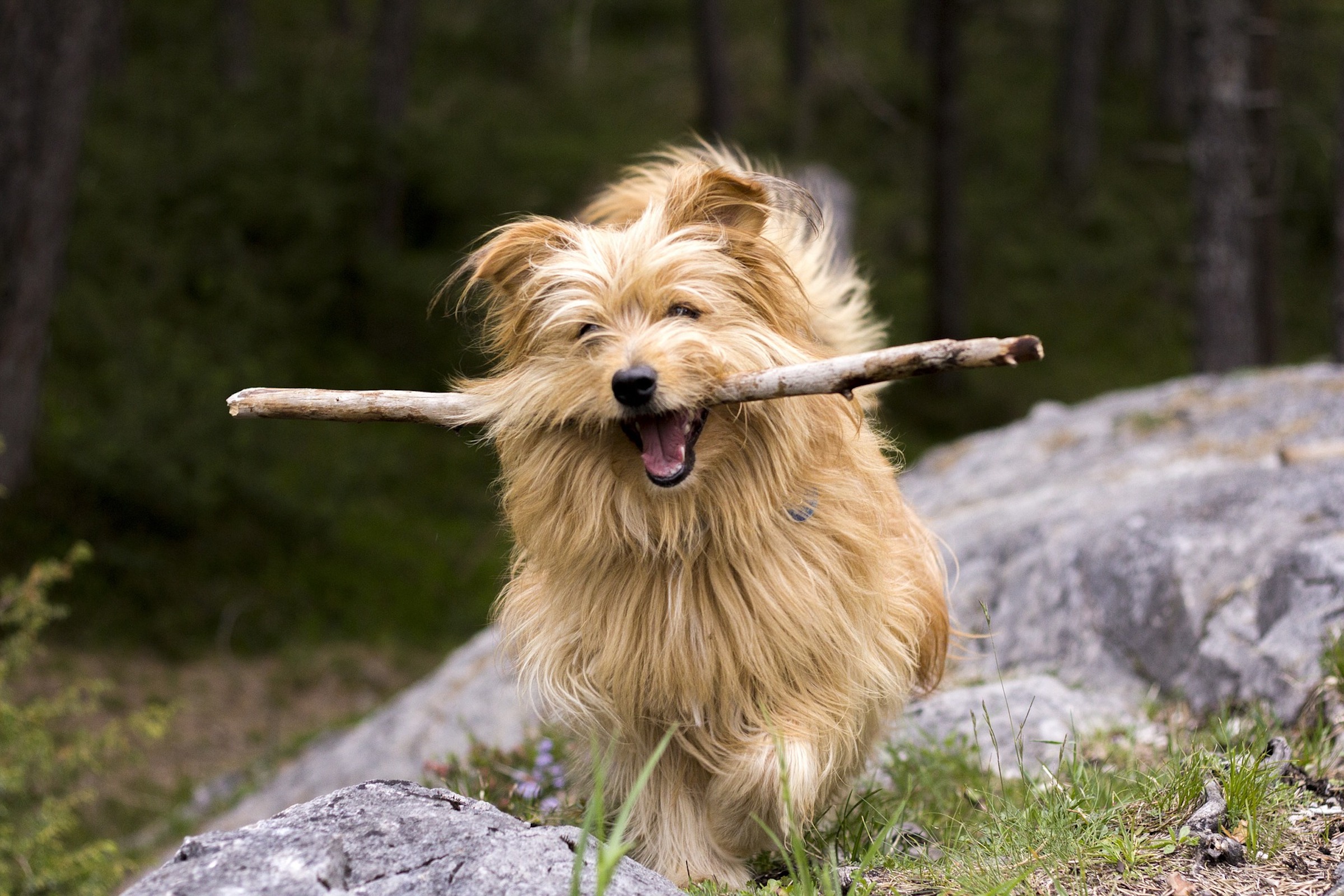
Chewing should be off-limits entirely because of the reasons we’ve already discussed. But that doesn’t mean you have to hurriedly remove the offending object any time your little guy picks one up. Follow these tips to help your dog play with sticks without getting hurt.
Choose wisely
Some trees break more easily, leak sap, or make dogs sick. You want to avoid those varieties and stick with the safer branches. Pine, poison oak, and yew should stay off-limits.
Leave them outside
You probably don’t want your pet bringing dirty wood into the house, anyway. As long as your dog is on a walk, they’re unlikely to start chewing. Tell them to drop it before coming back home and that will help prevent any safety hazards.
Consult a vet
Call your vet if you think your dog has digested a large amount of wood or has any other symptoms after playing with a stick, like diarrhea. On top of the stick itself, it could also contain bugs and mold that might make your animal ill, too.
If your buddy loves to chew, but you want them to leave sticks alone, consider getting them some chew toys that mimic a natural tree branch. This way, you’ll be guaranteed that they won’t wind up in the doctor’s office, and you won’t let any nasty bugs in your house that were riding along.

